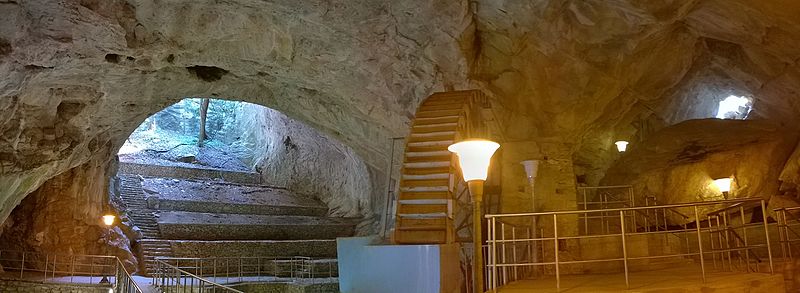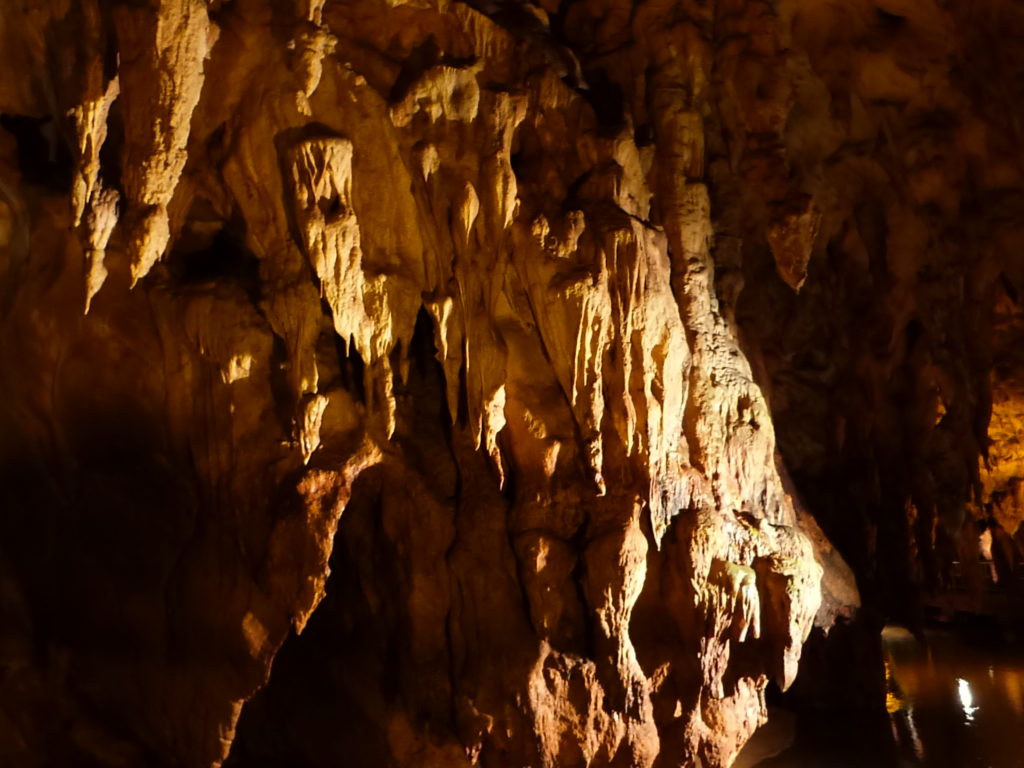
The Aggitis river cave is one of the largest and most spectacular river caves in all of Europe and is located in northern Greece near the city of Drama.
The cave, whose name originates from the river which runs through it, is an elongated, naturally-formed tunnel which serves as the single outlet for the waters collected in the enclosed basin of Kato Nevrokopi.
The riνer begins at the springs at Maara and crosses the western side of the lowlands after which the Philippi waters flow into it; the Aggitis then pours into the Strymon River and spans a length of 21 kilometers and a passage of 500m that ends at a siphon where visitors are able to experience the magic of this cave.
To date, only 8.5 kilometers—of which visitors can see 2.5 kilometers—have been explored.

The first explorations of Aggitis River Cave
The first recorded exploration of the cave was made by Esprit-Marie Cousinéry, the French consul at Thessaloniki, who traveled and explored the region of Macedonia for 40 years at the end of the eighteenth century.
After his retirement, he wrote a book about the area in which he describes his visit to the cave. He visited only the first “hall” of the structure but bestowed on it the grand name of “Nymphaion” since he thought this had been a place of worship for the ancient gods of water.

In the nineteenth century, a water wheel was installed in the enormous first hall which was used to pump the water up into a large pipe. The first short tunnel was built at this time for easier access to the first hall.
The cave’s water was clean enough to be used as drinking water for the town, as well as irrigation for the nearby tobacco fields. It wasn’t until 1978, however, that French and Greek speleologists managed to explore the cave down to a depth of 500 meters (1,640 feet).

An impressive natural structure
The roof of the cave is covered in stalactites, some of which have a diameter of 2 meters (6.5 feet) and reach down to the surface of the water. Their colors are varied and lovely with a special iridescence due to the existence of minerals, such as manganese, iron, and copper.
The area of the cave called the “Acropolis Hall” is especially impressive.
It is the largest single space ever discovered in a Greek cave, at 120m (394 feet) long, 65m (213 feet) wide, and 45m (148 feet) high. Its size, stalactite decorations, and the river flowing along it, creating underground banks and rocky formations, make for a truly eerie atmosphere.

At the present time, more than 8 km (5 miles) of the cave have been explored, but only 2.5 miles of it are accessible to visitors. Visitors can enter the cave from the man-made entrance and walk about half a kilometer into it. Stalactites of various forms, sizes, and colors hang above the cave, seeming to reach down to those walking along the bridge spanning the waters.
However, there is only a limited number of stalagmites in Aggitis Cave because of the continuous flow of the river within the cave.
Systematic archaeological excavations in the cave and the surrounding area began in 1992 and have brought to light stone tools, as well as the bones of prehistoric animals such as rhinoceros, megakeros (giant deer), and mammoth. Some of these important findings are exhibited in the nearby museum in Drama.
See all the latest news from Greece and the world at Greekreporter.com. Contact our newsroom to report an update or send your story, photos and videos. Follow GR on Google News and subscribe here to our daily email!



